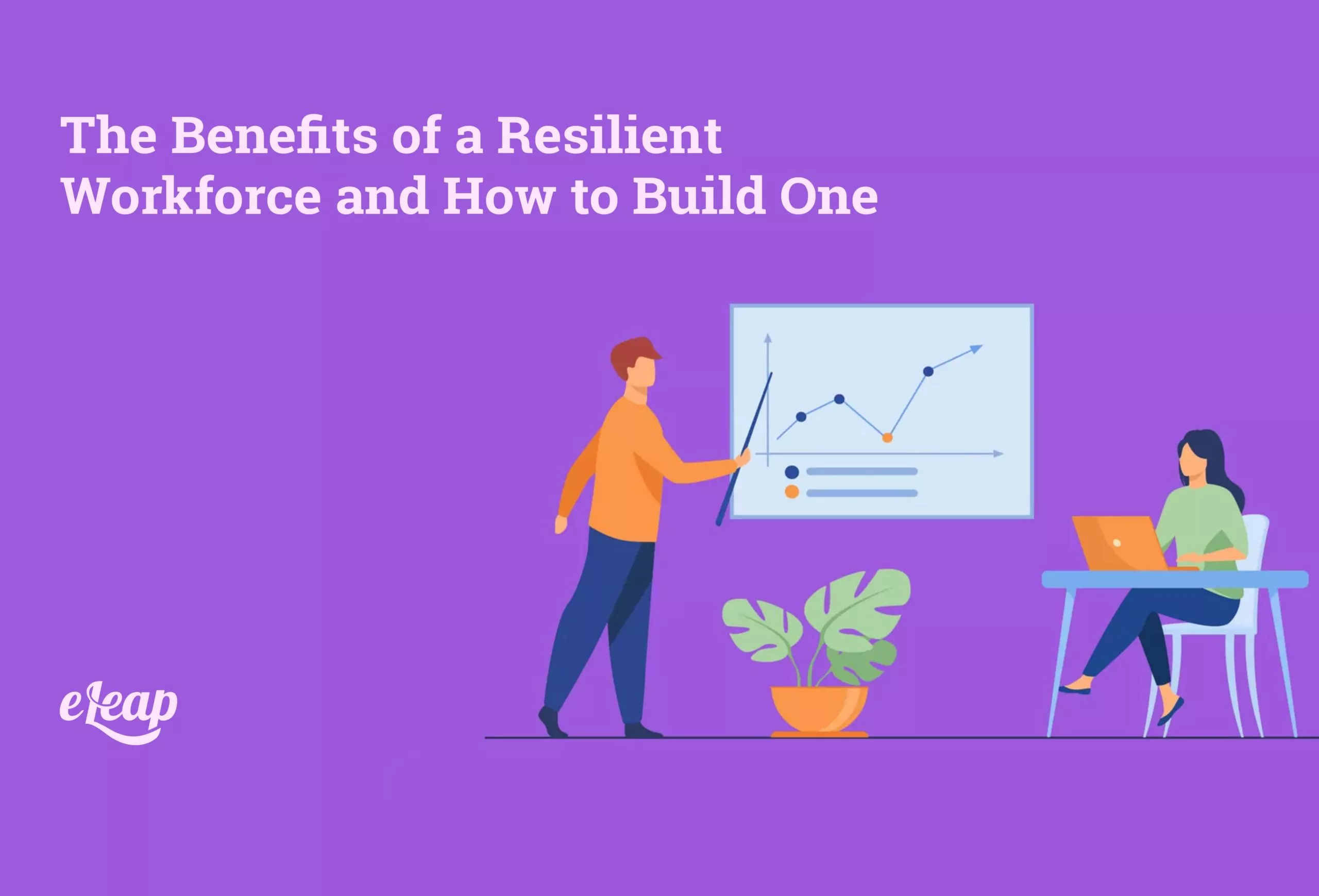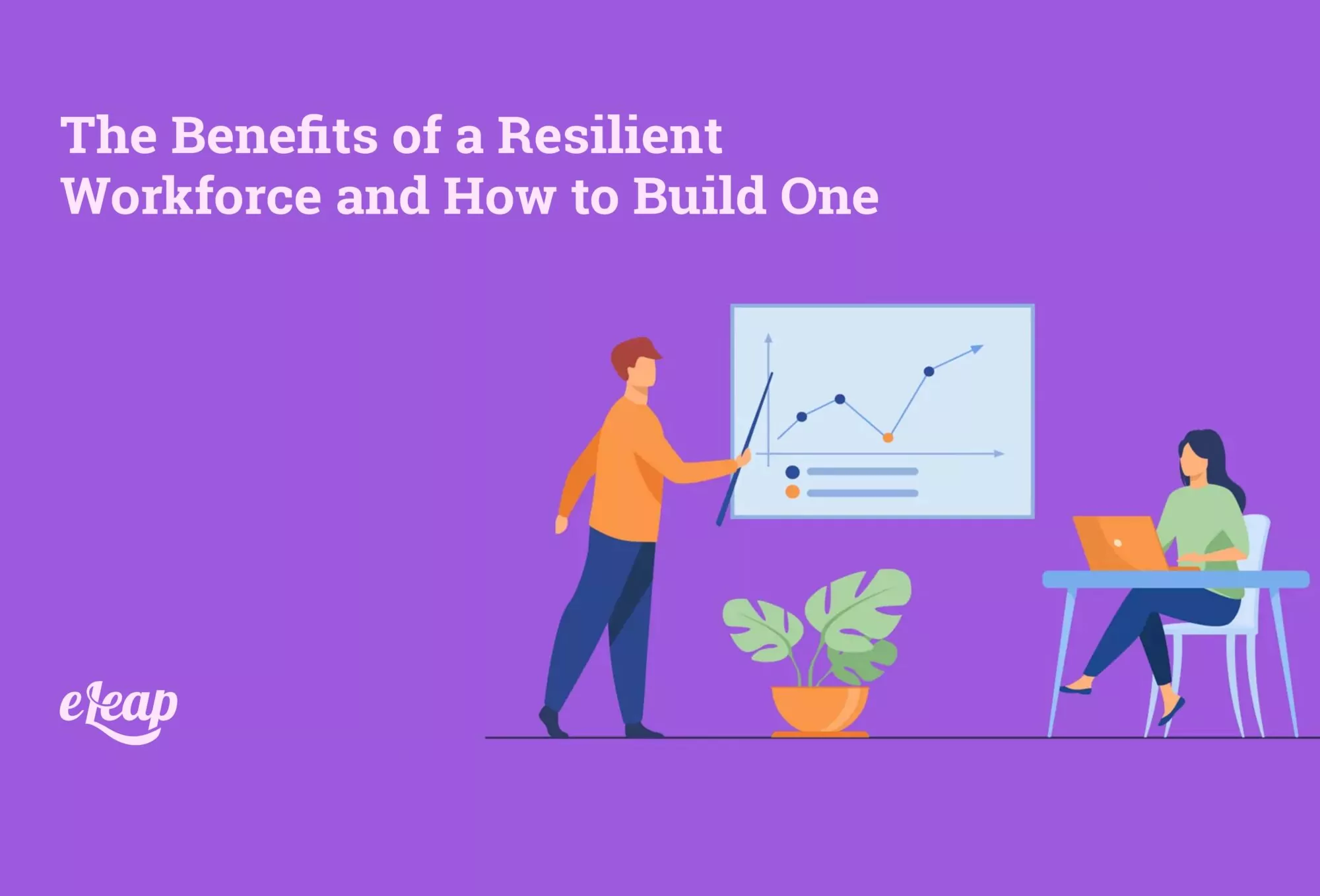The Benefits of a Resilient Workforce and How to Build One

Uncertainty has been an unfortunate component of employees’ lives recently. Following the pandemic, concerns about the economy, the housing market, and other worries it’s understandable why employees might feel stressed. Stressful changes in employees’ lives, particularly changes they can’t control, can prevent employees from thriving in the workplace. When employees aren’t thriving, your company suffers. And although the initial fear surrounding the pandemic is starting to die down, there is a lesson to be learned. A virus isn’t the only thing that can shake the confidence of a workforce. Any number of unforeseen events can occur at any time, and a resilient workforce is one that will persevere and come out the other side unscathed.
How can you help your employees to stay healthy within the workplace during stressful times? Well, one of the best ways is to ensure that you have a resilient workforce. Resilient workforces can bounce back following setbacks and continued to strive for positive changes and the resolution of problems. A workforce that isn’t resilient is much more likely to buckle under stress and in the face of change. If an entire workforce can be brought to its knees that isn’t good news for the company.

Understand The Problem
Before you can start building a resilient workforce you need to understand some of the top reasons why your employees might be struggling. Prior to coaching resilience, you should learn to empathize with their problems. Consider having check-ins with employees or using engagement surveys to find out what’s going on. To help, here are some common issues that employees struggle with:
Burnout
Burnout is one of the most common problems facing employees. If you have a number of employees that are still working remotely, this is an issue that you should be particularly aware of. When working from home, it can be very difficult to set boundaries between work and personal life, which is a recipe for burnout. And, with economic issues prevalent, the motivation behind working might not be to better themselves or out of choice, but rather because they’re afraid of losing their job. Employees that allow their working hours to take over their nights and weekends will likely become burnt out very quickly. Burnout is bad news for your business.
Uncertainty
Employees who were unsure of what the future of the company looks like are also likely to be extremely stressed. If your company isn’t clear with employees about what they can expect in the future, they’re going to be worried. For example, if you still have remote workers who don’t have a return date for going back to the office or are unsure whether their job is secure or whether your company will survive, they’re going to be nervous a lot of the time.
Lack of Support
Lack of support, particularly emotional support, is another common problem amongst employees. The past year has been extremely difficult for everyone and that’s likely to a have had a significant impact on your workforce. Employees who are feeling frustrated or concerned probably won’t be able to put their best efforts into their work.
Teaching Resilience
Fortunately, once you understand what might be bothering your employees you can start to coach resilience. The good news is that, while some might be more naturally inclined towards resilience, it isn’t just a personality trait. Resilience absolutely can and should be taught to entire workforces. There are a number of different ways that you can teach resilience, but the easiest way is to break it down into its essential components and then work on those individually. Here are some of the characteristics that you can implement into your workforce to help them become more resilient.
Trust
In order for your employees to trust each other, they need to learn to be vulnerable with one another. Encouraging employees to communicate openly and creating collaborative and engaging work environments are critical to building trust amongst a workforce. Team building exercises are an excellent place to start. Encourage employees to be vulnerable and work collaboratively towards a common goal. Trust also makes employees feel like they can lean on one another when times get tough.
A Sense of Belonging
By connecting the work that your employees do on a day-to-day basis with the bigger picture and the purpose of the company they’ll feel more like they belong. And when they feel like they belong within the environment and that their work means something, they’re more likely to be persistent and drive harder to accomplish goals.
Growth
Resilient employees tend to have a mindset that’s largely focused on growth. This often revolves around a love for learning and a belief that their skill set can be developed to overcome challenges. If employees don’t feel like they can grow they’re also much more inclined to give up when things get tough. A good way to improve growth mindset amongst employees is to encourage them to treat challenges as a learning curve rather than something to be feared.
A Positive Mindset
Positivity and optimism within the workplace are probably some of the most critical components to building resilience. Resilient people tend to view negative situations as something that can be worked upon and help them to grow. Motivation and feedback are essential components to generating an optimistic workforce. Employees need to feel like even if they fail there’s a lesson to be learned and they can continue to move onwards and upwards. A negative workforce is a company killer, and a negative workforce is also one that is not resilient in the face of change.
Understanding the components that make a resilient workforce can help you to build those characteristics amongst your employees in order for them to become more resilient. Consider that employees need to be resilient individually before there can be resilient together as a group. If you can achieve resilience, they’re much more likely to overcome any hurdles in the future, which will only benefit the company in the long run.